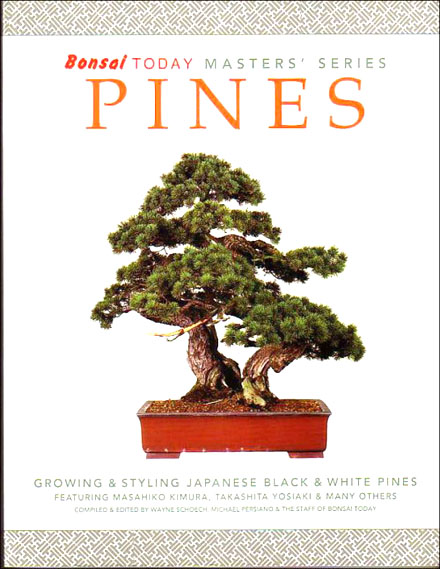This Japanese white pine shows a strong truck with good taper and nice balanced open branching. Most quality Japanese white pine bonsai have been grafted onto Black pine stock, but this one was grown from seed. When this photo was taken it had just been wired by Michael Hagedorn (Crataegus Bonsai.) It belongs to a client of Micheal's.
The Japanese white pine is one of the world’s emblematic bonsai. In Japan it is one of the two most famous classical bonsai species (the other is the Japanese black pine) and appreciation for its beauty and suitability for bonsai has spread throughout the world. So much so, that any serious bonsai display without at least one Japanese white pine might be said to be incomplete (climate permitting, of course).
Japanese white pine bonsai are usually grafted onto Japanese black pine (Pinus thunbergii) stock, and though there might be people grafting them elsewhere, it seems that they all come from Japan. The reason for grafting is mostly because black pines are so much more vigorous than the more delicate and finicky Japanese whites. This is especially true of White pine cultivars, many of which simply won’t thrive on their own roots.
What’s in a name? The Latin name for Japanese white pine (aka Japanese five needle pine) is Pinus parviflora. The Japanese name is Goyo Matsu. Matsu is pine and Goyo means five-needle.
Root-on-rock Japanese white pines are not at all unusual. The more I look at this one, the more I am struck with just how balanced and tranquil it seems (taking nothing away from its rugged wild side). The photo was taken in Japan at the 2011 Sakufu-ten exhibition by Jonas Dupuich (Bonsai Tonight).
Fluidity and muscle combined make for a very strong bonsai. To my eyes this is a near perfect informal upright Japanese white pine bonsai. It's from Mario Komsta's facebook photos. My guess is that it originated in Japan and that Mario has been growing it on and refining it. He calls it Goyo Kundo.
I like the way this photo captures the lines and color in the bark of this famous tree. That's the upside. The downside is that there's no way to tell just how large and powerful this tree is (it's massive). In fact, it would be easy to think that it's not very big at all. It resides at the National Bonsai and Penjing Museum. The photo is borrowed from Michael Bonsai.
Million dollar bonsai. Here's a mind-bending Japanese white pine that we featured back in 2011 with this caption: This magnificent White pine was sold at the 11th Asia-Pacific Bonsai and Suiseki Convention & Exhibition in at Takamatsu, Kagawa, Japan, earlier this month. As you can see, the asking price was 100,000,000 yen (that’s close to 1.3 million dollars). I don’t know what the actual sales price was. Photo borrowed from Bonsai Tonight.
This flowing bunjin Japanese white pine provides a little contrast to the husky trees above. It's from our Masters' Series Pines: Growing and Styling Japanese Black and White Pines (just below).
All the photos and some of the text in this post originally appeared here on Bonsai Bark in January, 2013.
 If you’d like to grow and style your own Japanese white pines, you’d do very well to consult with our famous pine book. Among other things, it contains some of the best how-to instruction anywhere. Great photos too.
If you’d like to grow and style your own Japanese white pines, you’d do very well to consult with our famous pine book. Among other things, it contains some of the best how-to instruction anywhere. Great photos too.
The time is right
All of our Bonsai books & Japanese gardening books are now 30% off
plus FREE Shipping on U.S. orders 59.00 or more